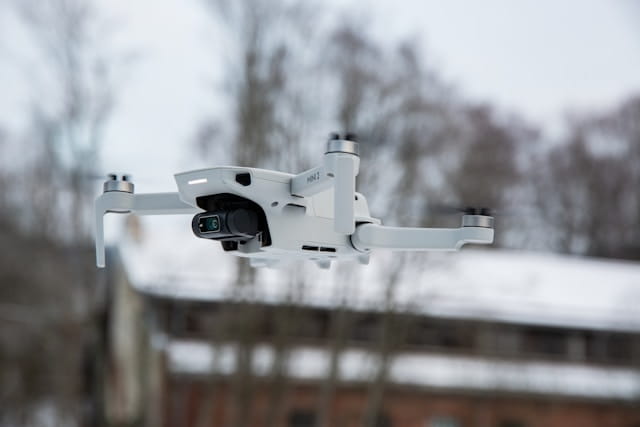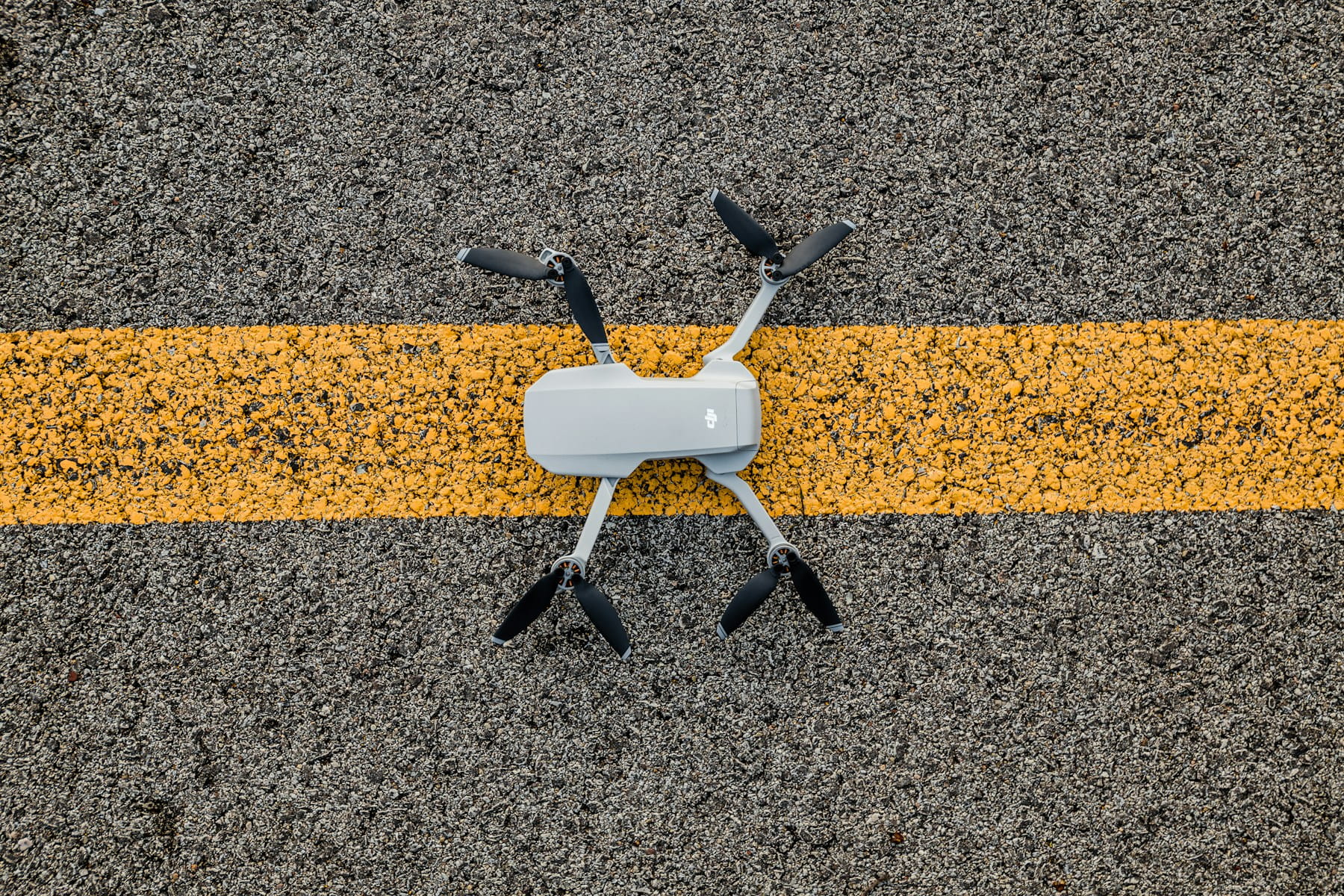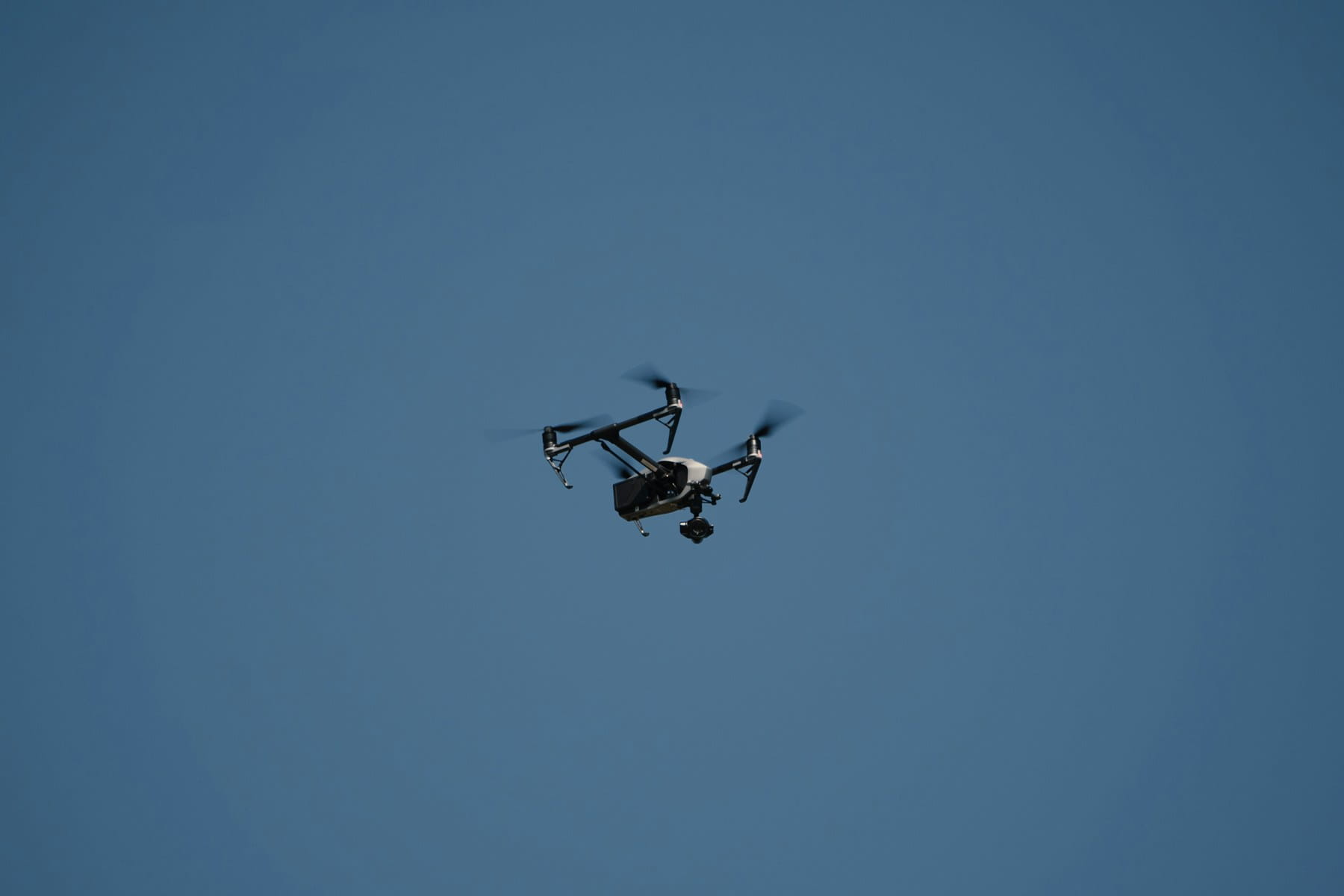Learn about UAS pilot training requirements, pathways, certification processes, industry-specific skills, ongoing education, and future trends to ensure safe, compliant, and professional drone operations.
Professional drone operations require trained pilots who understand aviation regulations, safety protocols, and technical requirements. The Federal Aviation Administration (FAA) has established specific training pathways for unmanned aircraft system (UAS) operators, creating a framework that balances accessibility with safety standards.
Most commercial drone operations fall under Part 107 regulations, which mandate pilot certification for business use. This includes real estate photography, agricultural surveys, infrastructure inspections, and emergency response operations. The certification process varies depending on your aviation background and intended use.
But here's where it gets interesting - the training requirements aren't just about passing a test. They're designed to create competent pilots who can make sound decisions in complex airspace environments. Understanding comprehensive compliance management becomes essential for professional operations in today's regulatory environment.
Table of contents
- Understanding Part 107 certification requirements
- Training pathways for different pilot backgrounds
- Knowledge test preparation and content areas
- Practical training considerations
- Maintaining certification currency
- Advanced training opportunities
- Cost analysis and budgeting
- Common training challenges and solutions
- Industry-specific training needs
- Future developments in UAS training
Understanding Part 107 certification requirements
The Part 107 Remote Pilot Certificate serves as the foundation for commercial drone operations. Unlike recreational flying, commercial operations require demonstrated knowledge of aviation regulations, weather interpretation, and airspace management.
Basic eligibility requirements are straightforward. Pilots must be at least 16 years old, able to read and speak English, and physically capable of safe drone operation. No previous aviation experience is required, though it certainly helps during the learning process.
The certification demonstrates competency in twelve core knowledge areas. These range from applicable regulations to emergency procedures, covering everything a professional pilot needs to operate safely in the national airspace system.
Physical and mental fitness standards
Physical fitness requirements for UAS pilots are less stringent than traditional aviation certificates. Pilots must be capable of safely controlling the aircraft and making sound decisions during flight operations. This includes adequate vision (correctable), hearing sufficient for radio communications, and mental capacity for aeronautical decision-making.
Medical conditions that could impair judgment or reaction time need consideration. While no formal medical certificate is required, pilots should honestly assess their fitness for flight operations. The FAA can revoke certificates if medical conditions create safety risks.
English language proficiency
English proficiency extends beyond basic conversation. Pilots must comprehend technical publications, weather reports, and air traffic control communications. Aviation English includes specific terminology and phraseology that differs from casual conversation.
Weather reports (METARs and TAFs) use standardized abbreviations and formats. Sectional charts contain symbols and notations requiring interpretation. Radio communications follow specific protocols and procedures. Training programs should address these language-specific requirements.
Training pathways for different pilot backgrounds
The FAA recognizes two primary pathways to Part 107 certification, acknowledging that pilots bring different experience levels to UAS operations.
First-time pilots follow a comprehensive path that includes ground school training and a written knowledge test. This pathway assumes no previous aviation knowledge and covers all required topics from basic principles through advanced applications.
Existing certificated pilots can leverage their aviation background through an abbreviated process. These pilots complete online training modules and demonstrate currency through recent flight review completion.
First-time pilot pathway
New pilots begin with comprehensive ground school training covering all Part 107 knowledge areas. Quality training programs present complex topics in digestible formats, building understanding progressively from basic concepts to advanced applications.
The pathway includes several distinct phases:
Foundation knowledge development covers basic aviation principles, regulatory framework, and safety concepts. This phase establishes the groundwork for more advanced topics.
Technical systems training addresses aircraft performance, weather interpretation, and navigation principles. Pilots learn to calculate performance parameters, interpret weather data, and plan safe flight operations.
Operational procedures training covers preflight planning, emergency procedures, and crew resource management. This phase emphasizes practical application of knowledge in operational scenarios.
Regulatory compliance training details specific Part 107 requirements, operating limitations, and waiver procedures. Pilots learn to operate within regulatory constraints while maximizing operational flexibility.
Existing pilot pathway
Certificated pilots under Part 61 can complete Part 107 certification through online training modules. This pathway recognizes existing aviation knowledge while addressing UAS-specific requirements.
The abbreviated training covers areas unique to unmanned operations. Traditional pilots already understand airspace, weather, and navigation principles. UAS training focuses on operational differences, performance characteristics, and regulatory variations.
Online modules typically cover:
- UAS-specific regulations and operating limitations
- Small aircraft performance characteristics
- Emergency procedures for unmanned operations
- Maintenance and inspection requirements
- Night operation procedures
Pilots must maintain currency through recent flight review completion. This ensures continued competency in basic aviation principles while adding UAS-specific knowledge.
Knowledge test preparation and content areas
The Part 107 knowledge test covers twelve specific areas outlined in federal regulations. Test questions draw from a database maintained by the FAA, focusing on practical application rather than rote memorization.
Effective test preparation balances comprehensive study with practical application. Many pilots make the mistake of memorizing answers without understanding underlying principles. This approach may pass the test but fails to develop competent decision-making skills.
Core knowledge areas breakdown
Regulations and operating requirements form the foundation of professional drone operations. This includes Part 107 limitations, waiver procedures, and coordination requirements with air traffic control.
Airspace classification requires understanding controlled and uncontrolled airspace, operating procedures in different environments, and communication requirements. Pilots must interpret sectional charts and identify airspace boundaries.
Aviation weather encompasses weather source interpretation, performance effects, and flight planning considerations. This includes METAR and TAF interpretation, weather hazard recognition, and go/no-go decision making.
Aircraft performance covers loading calculations, center of gravity considerations, and performance limitations. Pilots learn to calculate maximum operating weights and understand performance degradation factors.
Test-taking strategies
Knowledge tests require strategic preparation beyond subject matter study. Understanding question formats, common distractors, and time management techniques improves test performance significantly.
Questions often present scenarios requiring analysis and application. Rather than asking for regulation citations, they present situations where pilots must apply regulatory knowledge to make decisions.
Practice exams help identify knowledge gaps and familiarize pilots with question formats. Quality practice materials mirror actual test questions and provide detailed explanations for correct and incorrect answers.
Time management becomes critical during the actual test. With 60 questions and 2 hours available, pilots should allocate approximately 2 minutes per question while reserving time for review.
Practical training considerations
While Part 107 certification focuses on knowledge testing, practical flying skills remain essential for safe operations. Many training programs supplement ground school with hands-on flight training, though this isn't regulatory required.
Practical training addresses the gap between theoretical knowledge and real-world application. Understanding airspace on paper differs significantly from operating in complex environments with multiple aircraft and changing conditions.
Flight training components
Basic aircraft handling forms the foundation of practical training. New pilots learn control inputs, aircraft responses, and normal operating procedures. This includes takeoff, landing, and basic maneuvering techniques.
Emergency procedures training prepares pilots for system failures, weather encounters, and unexpected situations. Practice scenarios build decision-making skills and emergency response capabilities, complementing comprehensive pre-flight checklists.
Advanced maneuvering covers precision flight techniques, obstacle avoidance, and specialized mission profiles. Different industries require specific flying skills - inspection flights demand precise positioning while mapping operations require systematic coverage patterns.
Real-world scenario practice integrates knowledge areas into practical applications. Training flights in different airspace types, weather conditions, and operational scenarios build pilot confidence and competency while incorporating risk assessment methodologies.
Simulator and virtual training options
Flight simulators provide safe environments for practicing emergency procedures and complex scenarios. High-quality simulators replicate aircraft performance characteristics and system responses accurately.
Virtual reality training systems offer immersive experiences for airspace familiarization and procedure practice. These systems allow repeated practice of challenging scenarios without aircraft operating costs or safety risks.
Computer-based training modules can supplement practical flying with interactive scenarios and decision-making exercises. These tools help pilots visualize complex airspace interactions and practice regulatory compliance procedures.
Maintaining certification currency
Part 107 certificates require recurrent training every 24 months to maintain validity. This training ensures pilots stay current with regulatory changes, technology developments, and safety best practices.
The recurrent training requirement applies to all certificate holders regardless of flight experience or frequency. Pilots must complete approved training modules covering updated regulations, safety trends, and operational procedures.
Currency requirements recognize that aviation knowledge degrades over time without regular reinforcement. Technology changes, regulations evolve, and safety lessons emerge from operational experience. Regular training maintains professional competency standards.
Recurrent training options
Standard recurrent training covers regulatory updates, safety alerts, and operational best practices. These modules typically require 2-3 hours of study time and include knowledge assessments.
Enhanced recurrent training options provide deeper coverage of specific topics or emerging technologies. Some programs offer specialized modules for industry-specific operations or advanced aircraft systems.
Online training modules offer flexibility for busy professionals while maintaining standardized content quality. Interactive elements and progress tracking help ensure effective learning outcomes.
Instructor-led sessions provide opportunities for questions, discussion, and practical exercises. Group sessions also offer networking opportunities with other professional pilots.
Tracking and documentation requirements
Pilots must maintain records of recurrent training completion and certificate status. Documentation requirements include training completion certificates, dates, and provider information.
Electronic record keeping systems simplify tracking and provide quick access during regulatory inspections or operational audits. Many pilots use digital logbooks that integrate training records with flight time documentation.
Professional pilots should maintain training records for at least three years beyond certificate expiration. This documentation may be required for insurance claims, client verification, or regulatory compliance audits.
Advanced training opportunities
Beyond basic Part 107 requirements, many pilots pursue advanced training to expand operational capabilities and career opportunities. Specialized training programs address specific industries, advanced aircraft systems, and complex operational scenarios.
Advanced training often focuses on specific applications rather than general knowledge. Agricultural pilots need pesticide application training. Infrastructure inspectors require specialized photography and sensor operation techniques.
Specialized certifications and endorsements
While the FAA doesn't offer formal endorsements for Part 107 certificates, industry organizations provide specialized training and certification programs. These credentials demonstrate advanced competency in specific operational areas.
Agricultural aviation training covers pesticide application techniques, drift management, and environmental protection procedures. Specialized programs address equipment operation, weather analysis, and regulatory compliance specific to agricultural operations.
Public safety training prepares pilots for emergency response operations, search and rescue missions, and law enforcement support. These programs emphasize rapid deployment, coordination procedures, and specialized equipment operation.
Infrastructure inspection training focuses on photography techniques, data collection procedures, and safety protocols for working around critical infrastructure. Training covers power line inspections, bridge surveys, and tower assessments.
Manufacturer-specific training programs
Aircraft manufacturers offer training programs specific to their platforms and systems. These programs provide detailed technical knowledge about aircraft capabilities, limitations, and maintenance requirements.
Professional operators often invest in manufacturer training to maximize aircraft performance and minimize operational risks. Training covers advanced flight modes, sensor operation, and troubleshooting procedures.
Some manufacturers require completion of training programs for warranty coverage or technical support access. These requirements ensure operators understand proper aircraft operation and maintenance procedures.
Cost analysis and budgeting
UAS pilot training represents a significant investment in professional development. Costs vary widely based on training provider, program comprehensiveness, and additional services included.
Basic Part 107 training programs range from $200 to $800, depending on format and provider reputation. Premium programs include additional support services, practice materials, and guaranteed pass rates.
The knowledge test fee costs $175 and is paid directly to testing centers. This fee is non-refundable, making adequate preparation essential for cost-effective certification.
Training cost comparison
| Training Type | Cost Range | Duration | Included Services |
|---|---|---|---|
| Online self-study | $150-400 | 15-25 hours | Videos, practice tests |
| Instructor-led classroom | $400-800 | 2-3 days | Instruction, materials, support |
| Comprehensive programs | $600-1200 | Variable | Training, test prep, guarantees |
| Recurrent training | $50-150 | 2-4 hours | Online modules, certificates |
Additional costs may include testing center fees, travel expenses, and supplementary materials. Some employers reimburse training costs as professional development investments.
Return on investment considerations
Professional drone pilots can command hourly rates from $75 to $300 depending on specialization and market conditions. Training costs typically recover within the first few commercial projects.
Specialized training often provides higher returns through access to premium markets. Infrastructure inspection pilots earn significantly more than general photography operators due to specialized knowledge requirements.
Career advancement opportunities multiply with advanced training credentials. Many companies prefer pilots with industry-specific training for complex projects and client-facing roles.
Common training challenges and solutions
Many pilot candidates face similar challenges during Part 107 preparation. Understanding common obstacles and proven solutions can streamline the training process and improve outcomes.
Mathematical calculations often challenge pilots without technical backgrounds. Weather interpretation, performance calculations, and loading problems require basic arithmetic and conceptual understanding.
Airspace visualization presents difficulties for pilots unfamiliar with sectional charts and three-dimensional airspace structures. Complex airspace around major airports can seem overwhelming initially.
Regulation interpretation challenges pilots accustomed to simplified rules summaries. Part 107 regulations include exceptions, limitations, and cross-references that require careful analysis.
Study strategies and techniques
Spaced repetition improves long-term retention compared to cramming before test dates. Regular review sessions reinforce learning and identify knowledge gaps requiring additional attention.
Visual learning aids help pilots understand complex airspace structures and aircraft systems. Diagrams, charts, and three-dimensional models clarify abstract concepts effectively.
Practice scenario analysis develops decision-making skills beyond rote knowledge. Working through realistic situations builds confidence and practical application abilities.
Study groups provide peer support and alternative explanations for difficult concepts. Group discussions often reveal different perspectives and problem-solving approaches.
Overcoming specific knowledge gaps
Aviation weather interpretation challenges many new pilots due to specialized terminology and formats. Weather training should emphasize practical application rather than memorization of definitions.
Sectional chart reading requires systematic practice with different chart types and scales. Starting with simple areas and progressing to complex metropolitan regions builds confidence gradually.
Performance calculations become manageable with step-by-step approaches and consistent practice. Understanding underlying principles matters more than memorizing specific formulas.
Industry-specific training needs
Different industries place varying demands on UAS pilots, requiring specialized knowledge and skills beyond basic Part 107 requirements. Professional pilots often pursue industry-specific training to increase marketability and operational effectiveness.
Real estate photography emphasizes composition, lighting, and property presentation techniques. Agricultural operations require understanding of crop growth patterns, pesticide application principles, and environmental protection measures.
Public safety operations demand rapid deployment capabilities, coordination procedures, and emergency response protocols. Each industry has unique challenges and specialized requirements.
Construction and infrastructure
Construction site operations involve complex safety protocols, coordination with ground crews, and specialized data collection techniques. Pilots must understand construction processes, safety zones, and equipment operation procedures while maintaining detailed flight data monitoring for performance optimization.
Infrastructure inspection requires detailed knowledge of structural components, failure modes, and inspection standards. Different infrastructure types (bridges, towers, pipelines) have specific inspection requirements and safety considerations.
Safety training emphasizes hazard recognition, personal protective equipment, and emergency procedures specific to construction environments. Pilots learn to identify and avoid common construction site hazards.
Data collection training covers photography techniques, measurement procedures, and documentation standards required for professional inspection reports.
Agriculture and environmental monitoring
Agricultural operations require understanding of crop types, growth stages, and treatment timing. Pilots must coordinate with ground equipment operators and understand agricultural chemical handling procedures.
Environmental monitoring emphasizes data accuracy, sampling protocols, and regulatory compliance requirements. Different environmental applications have specific data quality and documentation standards.
Equipment operation training covers specialized sensors, application systems, and data analysis software used in agricultural and environmental operations.
Regulatory compliance training addresses environmental protection requirements, chemical application standards, and documentation procedures required for professional operations.
Public safety and emergency response
Emergency response operations require rapid deployment capabilities, coordination with multiple agencies, and operation in challenging conditions. Training emphasizes safety protocols, communication procedures, and mission effectiveness.
Search and rescue missions demand specialized flight techniques, sensor operation, and coordination with ground teams. Pilots learn to operate in remote areas with limited infrastructure support.
Tactical operations training covers low-light operations, obstacle avoidance in challenging terrain, and coordination with other aircraft and ground units.
Equipment specialization addresses thermal imaging systems, communication equipment, and specialized mission payloads used in public safety operations.
Future developments in UAS training
The UAS training landscape continues evolving with technological advances, regulatory changes, and industry maturation. Several trends are shaping the future of pilot training and certification.
Advanced simulation technologies provide increasingly realistic training environments without operational risks or costs. Virtual and augmented reality systems offer immersive training experiences that closely replicate real-world conditions.
Artificial intelligence integration enables personalized training programs that adapt to individual learning styles and knowledge gaps. AI-powered systems can identify areas requiring additional attention and customize training accordingly.
Remote training delivery expands access to quality instruction regardless of geographic location. Interactive online platforms provide instruction quality approaching traditional classroom experiences.
Regulatory evolution and training impacts
The FAA continues refining Part 107 regulations based on operational experience and technological developments. Training programs must adapt quickly to regulatory changes while maintaining comprehensive coverage of requirements.
Beyond visual line of sight (BVLOS) operations will likely require additional training and certification elements. Extended range operations introduce new challenges for communication, navigation, and emergency procedures.
Urban air mobility integration may create new training requirements as unmanned and manned aircraft share increasingly complex airspace. Training programs will need to address advanced coordination and separation procedures.
Autonomous operations will shift training focus from manual control skills toward system management and emergency intervention capabilities. Pilots will need different skill sets for supervising autonomous systems.
Technology integration in training
Adaptive learning platforms customize training content based on individual progress and learning patterns. These systems optimize study time by focusing attention on areas requiring additional development, similar to how flight data monitoring optimizes operational performance.
Simulation integration provides safe environments for practicing complex scenarios and emergency procedures. Advanced simulators replicate aircraft performance, weather conditions, and system failures accurately while supporting comprehensive risk assessment training.
Mobile learning platforms enable training access from anywhere, accommodating busy professional schedules and diverse learning preferences while maintaining compliance documentation standards.
Performance analytics track learning progress and identify areas requiring additional attention. Data-driven approaches optimize training effectiveness and reduce time to competency through systematic analysis methods.
Why Professional UAS Training Matters for Commercial Operations
The drone industry continues expanding rapidly, creating opportunities for trained professionals across numerous sectors. Quality training provides the foundation for safe, successful operations while opening doors to exciting career possibilities that transform aviation careers.
- Safety enhancement: Comprehensive training reduces incident rates and builds professional confidence
- Career advancement: Specialized training opens higher-paying opportunities across diverse industries
- Regulatory compliance: Proper certification ensures adherence to FAA requirements and operational standards
- Professional credibility: Quality training demonstrates commitment to safety and operational excellence
Fast Facts: UAS Pilot Training Benefits
| Training Component | Key Benefits | Career Impact |
|---|---|---|
| Part 107 Certification | Legal commercial operations, regulatory compliance | Entry-level commercial opportunities |
| Specialized Industry Training | Higher compensation, niche market access | Premium service provider status |
| Recurrent Education | Currency maintenance, technology updates | Sustained professional competency |
| Advanced Certifications | Complex mission capabilities, leadership roles | Senior pilot and management positions |
Getting Started with Professional UAS Training
- Assess your aviation background and determine the appropriate certification pathway
- Choose quality training providers with proven success rates and comprehensive curricula
- Focus on practical application beyond test preparation for real-world competency
- Plan for ongoing education including recurrent training and specialization opportunities
- Build industry connections through training programs and professional organizations
Essential preparation: Before beginning training, understand how pilot certification integrates with broader operational compliance and risk management requirements.
In Summary
Whether you're starting a new career or expanding existing capabilities, proper UAS training remains the key to professional success. The investment in quality education pays dividends through increased opportunities, higher compensation, and operational confidence that sets professionals apart in competitive markets.
Ready to Transform Your UAS Career?
Join thousands of professional pilots who have built successful careers through comprehensive UAS training and certification. Whether you're pursuing Part 107 certification, specialized industry training, or advanced operational capabilities, proper education provides the foundation for sustainable success.
Start your free trial today — no credit card required.
Or book a demo to see how DroneBundle integrates training management with compliance tracking, operational planning, and performance analytics in a single platform designed specifically for professional UAS operations.
Transform your training into career success. With comprehensive education and proper operational support, every flight becomes an opportunity to demonstrate professional competency and build lasting client relationships.




